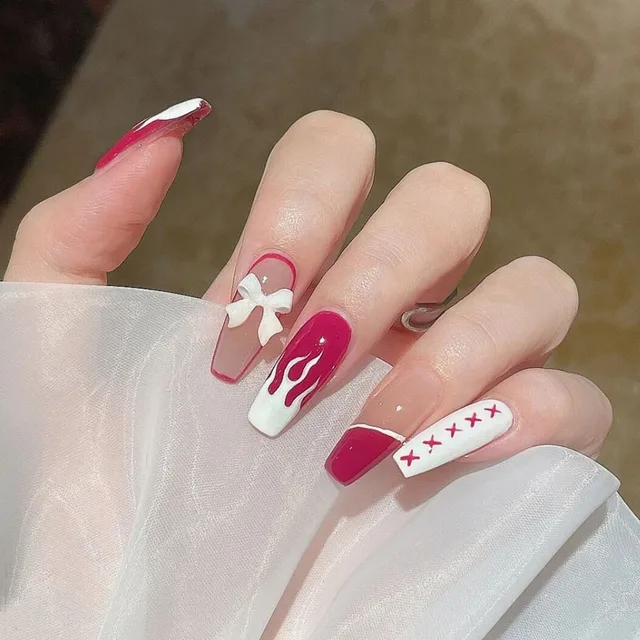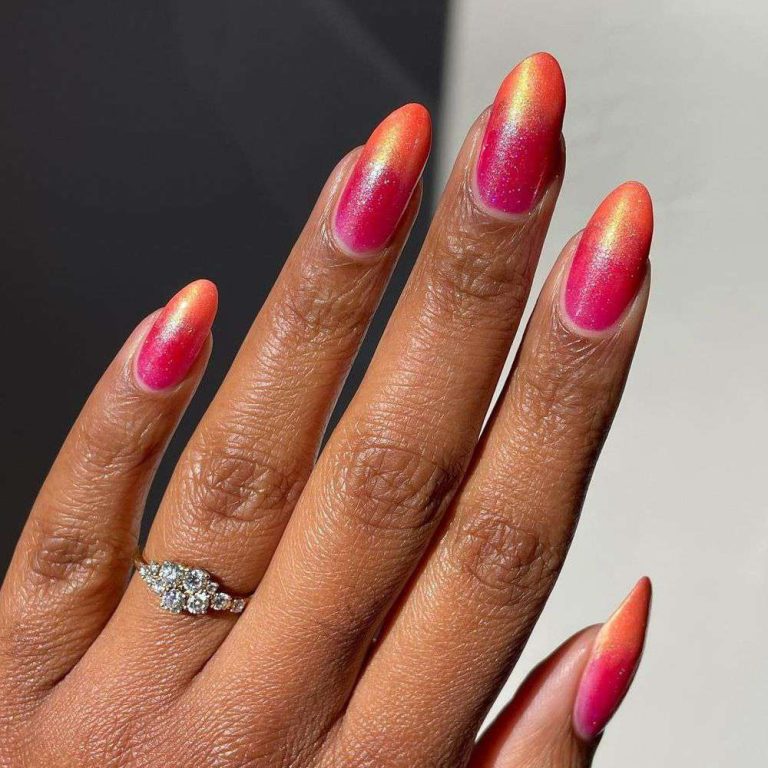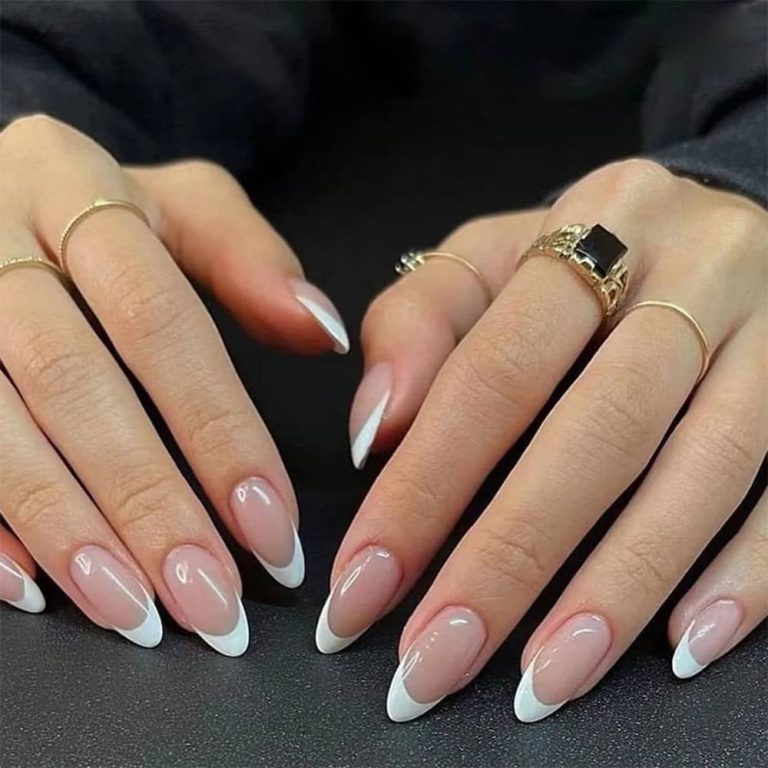
What is Acrylic Nails: Everything You Need to Know
Understanding Acrylic Nails: A Modern Beauty Trend
Acrylic nails have revolutionized the beauty industry, offering a versatile and durable solution for nail enhancement. These artificial nails consist of a combination of a liquid monomer and a powder polymer. When mixed, these components form a hard, protective layer over the natural nail. The resulting acrylic nails provide a perfect canvas for various designs and colors. They allow for length extension and shape manipulation, catering to diverse aesthetic preferences. Acrylic nails have gained immense popularity due to their longevity and strength. They can withstand daily wear and tear better than natural nails, making them ideal for individuals with weak or brittle nails.
Moreover, acrylic nails offer instant gratification, transforming short nails into long, elegant extensions in a single salon visit. The versatility of acrylics allows for a wide range of customization options. From classic French tips to intricate nail art, these artificial nails can accommodate various styles. As a result, acrylic nails have become a staple in the beauty routines of many. They provide a practical solution for those seeking to enhance their nail appearance without waiting for natural growth. Understanding the basics of acrylic nails serves as a foundation for exploring their benefits, application process, and maintenance requirements.

The History and Evolution of Acrylic Nails
The journey of acrylic nails began in the 1950s, marking a significant milestone in nail enhancement technology. Dr. Frederick Slack, a dentist, accidentally discovered the potential of dental acrylics for nail repair. This serendipitous event led to the development of the first acrylic nail products. Initially, these early versions were thick and unnatural-looking. However, continuous innovation has refined the technology, resulting in more realistic and aesthetically pleasing options. The 1970s saw the rise of professional-grade acrylic nail products, paving the way for widespread adoption in salons. As techniques improved, acrylic nails gained popularity among celebrities and fashion icons.
This exposure fueled public interest and demand. Over the decades, advancements in chemistry have led to safer, more durable formulations. The introduction of odorless acrylics and low-monomer products addressed health concerns associated with earlier versions. Additionally, the development of colored acrylics expanded creative possibilities for nail technicians and clients alike. The evolution of acrylic nails continues today, with ongoing research focusing on improving durability, flexibility, and overall nail health. Modern acrylics incorporate ingredients that nourish the natural nail, minimizing damage associated with long-term use. Furthermore, eco-friendly and vegan options have emerged, catering to environmentally conscious consumers. The history of acrylic nails reflects a constant drive for innovation in the beauty industry.
The Science Behind Acrylic Nails
Understanding the science behind acrylic nails reveals the complexity of this seemingly simple beauty enhancement. The process begins with two key components: a liquid monomer and a powder polymer. The monomer, typically ethyl methacrylate, acts as a binding agent. The polymer, a fine powder, provides structure and durability. When combined, these elements undergo a chemical reaction called polymerization. This process forms long chains of molecules, creating a hard, plastic-like substance. The nail technician carefully controls this reaction, shaping the acrylic as it sets. The strength of acrylic nails comes from the cross-linking of polymer chains during curing.
This molecular structure provides excellent resistance to breakage and chipping. Additionally, acrylic nails are porous, allowing them to bond securely with nail polish and other decorative elements. The science extends to the development of different formulations for various needs. Some acrylics incorporate UV inhibitors to prevent yellowing, while others include flexible polymers for a more natural feel. Advanced systems even offer odor-reducing properties and improved adhesion. The interaction between acrylics and the natural nail involves complex chemistry. Proper application and removal techniques minimize potential damage to the nail bed. Understanding these scientific principles helps both technicians and clients appreciate the intricacies of acrylic nails.

The Application Process: From Natural to Fabulous
The transformation from natural nails to stunning acrylics involves a meticulous process. First, the nail technician thoroughly cleanses and sanitizes the hands and nails. This step eliminates oils and bacteria that could interfere with adhesion. Next, they gently push back the cuticles and lightly buff the natural nail surface. This creates a clean canvas and improves bonding. The technician then applies a nail dehydrator and primer. These products remove any remaining moisture and enhance the acrylic’s grip on the natural nail. After preparation, the artistry begins.
The nail technician selects the appropriate nail form or tip, depending on the desired length and shape. They carefully mix the acrylic powder and liquid, achieving the perfect consistency. Using a small brush, they apply the mixture to the nail, skillfully sculpting it into the desired form. Precision is crucial during this stage to ensure a smooth, even application. Once the acrylic sets, which takes about 15 minutes, the shaping begins. The technician files and buffs the nails to achieve the desired length and shape. They pay close attention to creating a natural-looking C-curve and smile line for French tips. Finally, the nails are smoothed to a glossy finish, ready for polish or nail art. The entire process typically takes one to two hours, depending on the complexity of the design.
Choosing the Right Shape and Length
Selecting the ideal shape and length for acrylic nails plays a crucial role in achieving a flattering look. Popular shapes include square, round, oval, almond, coffin, and stiletto. Each shape offers a unique aesthetic and suits different hand types and personal styles. Square nails provide a classic, timeless appearance and work well for those with long fingers. Round and oval shapes create a soft, feminine look and are perfect for shorter fingers. Almond nails elongate the hands and offer a sophisticated touch. Coffin nails, also known as ballerina nails, feature a tapered square tip and exude modern elegance. Stiletto nails make a bold statement with their dramatic pointed tips.
When choosing length, consider lifestyle and practicality. Short to medium-length nails are versatile and suitable for everyday wear. Longer nails create a more glamorous effect but may require some adjustment in daily activities. The nail technician can offer expert advice on the most flattering shape and length based on hand structure and personal preferences. It’s important to remember that acrylic nails can be customized to any desired shape and length. Many clients opt for a combination of shapes, such as a squoval (square-oval) or a soft square. Experimenting with different shapes and lengths allows for personal expression and keeps the look fresh and exciting.

Maintenance and Care for Long-Lasting Acrylic Nails
Proper maintenance ensures the longevity and beauty of acrylic nails. Regular fill-ins every two to three weeks help prevent lifting and maintain the nails’ appearance. During fill-ins, the nail technician removes any lifted acrylic, fills in the grown-out area, and reshapes the nails as needed. Daily care at home is equally important for preserving acrylic nails. Wearing gloves while doing household chores protects the nails from harsh chemicals and excessive moisture. Applying cuticle oil daily keeps the skin around the nails hydrated and prevents brittleness. Using a good quality hand lotion helps maintain overall hand health.
Avoiding excessive force or using nails as tools prevents breakage and damage. When removing nail polish, opt for acetone-free removers to prevent weakening of the acrylic. If a nail breaks or lifts, resist the urge to fix it at home. Instead, visit a professional nail technician for proper repair. Proper removal of acrylic nails is crucial to maintain the health of natural nails. Never attempt to pry off acrylic nails, as this can cause severe damage. Professional removal involves soaking the nails in acetone and gently scraping off the softened acrylic. With proper care and maintenance, a set of acrylic nails can last for several weeks, providing long-lasting beauty and durability.
The Pros and Cons of Acrylic Nails
Like any beauty enhancement, acrylic nails come with both advantages and disadvantages. Understanding these can help individuals make informed decisions about their nail care. On the positive side, acrylic nails offer durability and longevity. They withstand daily wear and tear better than natural nails, maintaining their appearance for weeks. Acrylics provide versatility in shape and length, allowing for customization to suit personal preferences. They serve as an excellent canvas for nail art and elaborate designs.
For those with weak or brittle nails, acrylics offer a protective layer that prevents further damage. Additionally, they provide an instant solution for those desiring longer nails without waiting for natural growth. However, acrylic nails also have potential drawbacks. The application process involves chemicals that may cause allergic reactions in some individuals. Improper application or removal can damage the natural nail bed, leading to weakening or infection.
Regular maintenance can be time-consuming and costly. Some people find the thickness of acrylics uncomfortable or unnatural-looking. There’s also a risk of trapping moisture between the acrylic and natural nail, potentially leading to fungal infections if not properly cared for. The removal process can be harsh on natural nails if not done correctly. Despite these concerns, many find that the benefits of acrylic nails outweigh the potential drawbacks when proper care and professional application are employed.
Health and Safety Considerations
While acrylic nails offer aesthetic benefits, it’s crucial to consider health and safety aspects. Choosing a reputable salon with licensed nail technicians ensures proper application and reduces the risk of complications. Professional technicians follow strict hygiene protocols, including sterilizing tools and maintaining a clean work environment. They also assess the condition of natural nails before applying acrylics. Some individuals may experience allergic reactions to acrylic products.
A patch test can help identify potential sensitivities. Proper application techniques minimize the risk of fungal or bacterial infections. However, prolonged use of acrylics without breaks can potentially weaken natural nails. Giving nails occasional “breathing periods” between applications allows them to recover. Overexposure to chemicals used in acrylic nail application may cause respiratory irritation.
Well-ventilated salons help mitigate this risk. UV lamps used for curing some acrylic products emit low levels of UV radiation. While the exposure is minimal, some clients opt to apply sunscreen to their hands as a precaution. It’s crucial to communicate any discomfort or unusual symptoms to the nail technician promptly. With proper precautions and professional application, acrylic nails can be a safe and enjoyable beauty enhancement.

Acrylic Nails vs. Other Nail Enhancement Methods
Acrylic nails represent just one option in the world of nail enhancements. Comparing acrylics to other methods helps in choosing the best fit for individual needs. Gel nails offer a popular alternative, known for their glossy finish and flexibility. They tend to look more natural than acrylics but may not provide the same level of durability. Gel nails require UV or LED light for curing, which some consider a drawback.
Dip powder nails have gained popularity for their long-lasting results and easier application process. They don’t require UV light and are often considered less damaging to natural nails. However, they may not offer the same level of customization as acrylics. Press-on nails provide a temporary solution, ideal for those who want to change their nail look frequently. They offer convenience but lack the durability of professional nail enhancements.
Silk or fiberglass wraps offer a more natural-looking option, particularly suitable for repairing cracked or split nails. However, they may not provide the strength and longevity of acrylics. Each method has its unique advantages and limitations. Factors like durability, aesthetic preferences, nail health, and lifestyle should guide the choice between these options. Some individuals even alternate between different methods to give their natural nails a break or to suit different occasions.
The Future of Acrylic Nails: Trends and Innovations
The world of acrylic nails continues to evolve, with exciting trends and innovations on the horizon. Eco-friendly and vegan acrylic formulations are gaining traction, catering to environmentally conscious consumers. These products aim to reduce the use of harsh chemicals while maintaining durability and performance. Improved polymer formulations promise even longer-lasting and more flexible acrylic nails. Some brands are exploring the use of biocompatible materials to enhance the safety and health aspects of acrylics.
The integration of technology in nail care is another emerging trend. Smart nails, incorporating tiny sensors or NFC chips, could soon become a reality. These futuristic nails might serve functions beyond aesthetics, such as making contactless payments or storing digital information. 3D printing technology may revolutionize the customization of acrylic nails, allowing for intricate designs and perfect fits. Advances in nail art techniques and materials continue to push the boundaries of creativity.
Holographic pigments, temperature-sensitive color-changing acrylics, and embedded LED lights are just a few examples of innovative nail art possibilities. As research in nail technology progresses, we can expect more breakthroughs in the coming years. These advancements aim to enhance the durability, safety, and versatility of acrylic nails while addressing current limitations and concerns.

